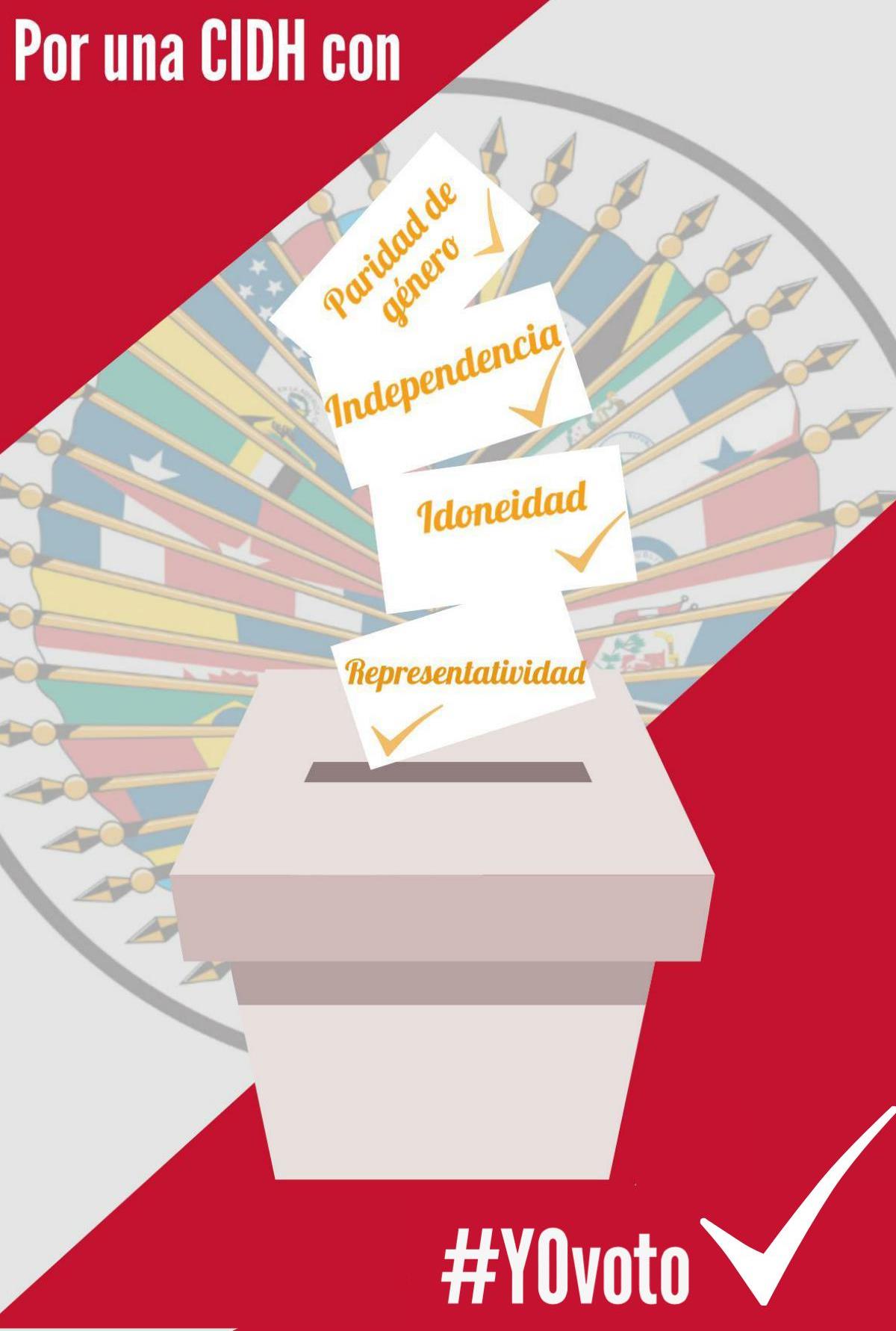






The two main bodies which make up the IAHRS –the Inter-American Commission on Human Rights and the Inter-American Court on Human Rights— have included renowned jurists from across the Americas that played a role in advancing case-law and creating important standards on the protection of human rights. However, serious limitations persist in the processes for selecting the members of the Commission and the Court. This has resulted in the IASHR not reflecting the diversity, legal systems, and cultures that live together in the Americas, which at the same time has an impact on the legitimacy of the decisions adopted by the Commission and the Court. The clearest example is the current all-male composition of the Court and the absence of members of indigenous peoples on both bodies.
At the next General Assembly, scheduled for June 2017 in Cancun, Mexico, member states will elect three members to the Commission. Given that this body is made up of seven members, this election will have significant consequences for its composition. Additionally, elections for three members to the Court are scheduled to take place in 2018. Considering these upcoming transitions, the IAHRS should incorporate standards which ensure that all elected commissioners and judges guarantee the independence, diversity, competence, and gender parity at the IACHR and I-A Court.
First, independence is a key standard critical to guaranteeing credibility and effectiveness of judicial decisions, particularly when meted out by institutions who are charged with protecting and promoting human rights. Because it is so essential, judges and commissioners must maintain this standard in their personal and professional lives.
One way to guarantee this criteria is to hold open announcements, generate publicity, and maintain high levels of transparency during national nominating processes in order to identify candidates with the greatest levels of independence from their appointing states. Therefore, a profound review is needed of the appointment mechanisms to ensure the independence of the persons who are candidates with respect to the states that nominate them, and the absence of any external pressures during the selection process. This is even more important in the IAHRS, as the members of the organs of protection do not serve full time. In many cases they maintain another professional activity that could result in an absence of functional impartiality vis-à-vis the state that nominated them, or an appearance thereof. In this regard, independence should be maintained throughout the selection process and when discharging personal responsibilities once elected.
Second, with regards to diversity and gender parity, ensuring a diverse justice system is essential for any democracy. These standards have been recognized nationally and internationally. However, in this sense, the IASHR falls short. Since the establishment of the Commission in 1959, of the 70 people who have served as commissioners, only 14 have been women; eight members have been Afrodescendants; and none have been indigenous peoples. As for the Court, since its establishment in 1979, only five women have sat on the bench, three of them Afrodescendant, and none of them indigenous. Addtionally, the Court does not currently include any jurist who represents a common law legal tradition; all the members have been trained in civil law.
Third, with regards to competence, the current system does not guarantee that selected candidates will have expertise required needed by the IASHR to analyze specific human rights issues in accordance with its broader regional agenda. This happens because, at the national level, the states generally choose the candidates unilaterally, without publicizing the process, and without any open announcements or mechanisms for observation by or consultation with civil society. At the regional level the process is by secret vote, mainly based on the exchange of votes among the states and without prioritizing the merits of the persons nominated.
In light of these considerations, it follows that current selection processes of candidates to the IACHR and the Court require additional measures to guarantee the standards of independence, diversity, competence, and gender parity As a positive step, the OAS adopted a resolution during the 2016 General Assembly encouraging states to nominate and elect candidates with a view to ensure that the Commission and the Court reflected the hemisphere’s legal systems, while maintaining balance in gender and geographical representation. It also asked that nominees meet the standards of Independence, suitability and impartiality, while possessing a recognized track-record on human rights issues.
By developing more detailed guidelines in the nomination and voting rules of its members, other international tribunals have paid more attention to this issue. This is the case in the International Criminal Court, the European Court of Human Rights and the African Court on Human and Peoples’ Rights. In that sense, a commitment by OAS states to adopt internal mechanisms to advance the aspirations contained in the resolution adopted in 2016 would be a significant step forward. This would encourage the adoption of more concrete and long-term initiatives to ensure greater scrutiny in nomination and selection processes. More importantly, a move like this would increase the legitimacy of the region’s human rights protection bodies and underscore a greater commitment by the OAS become more inclusive as a means to address the continent’s pressing realities.
To know more about this subject, visit our portal on Strengthening the Inter-American System on Human Rights & Learn about our campaign #iVote: For Suitable Representation.
Help us continue this critical and urgent work with a donation!
DONATE NOW